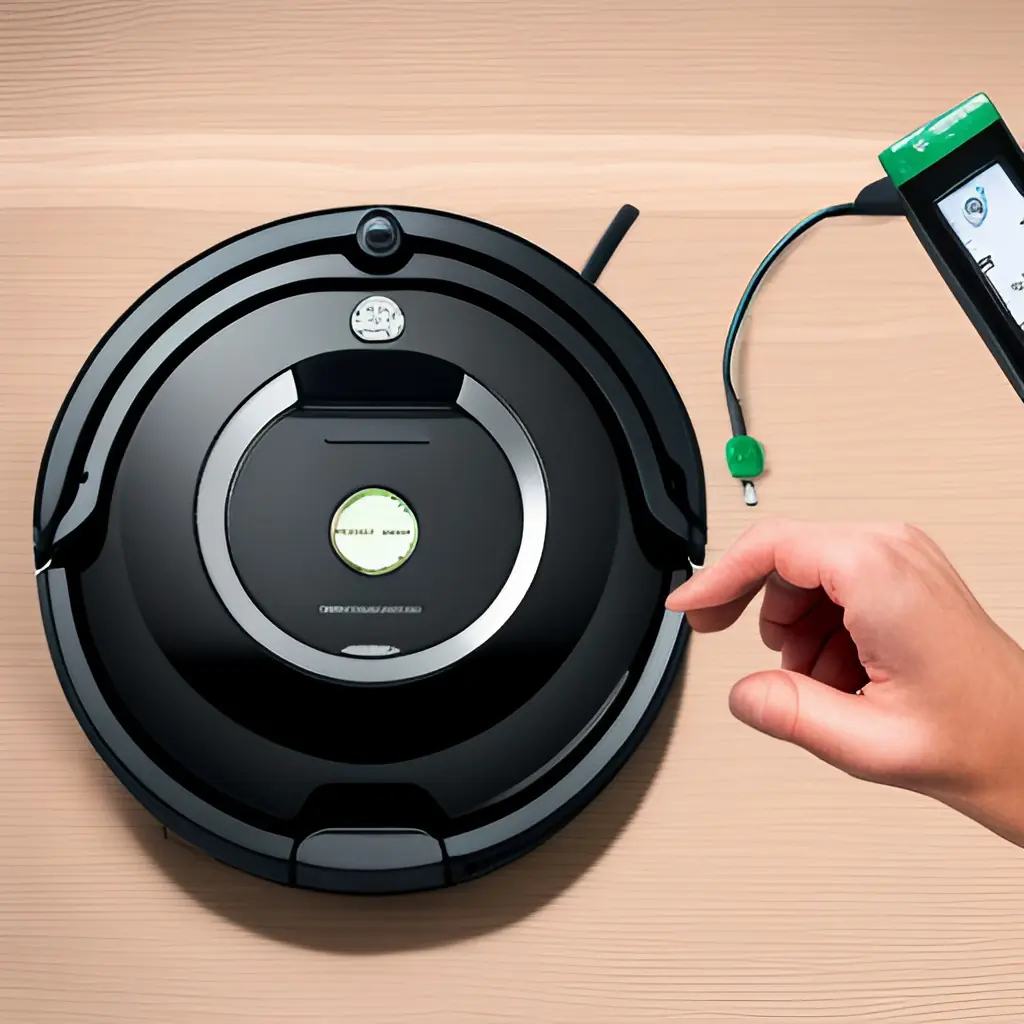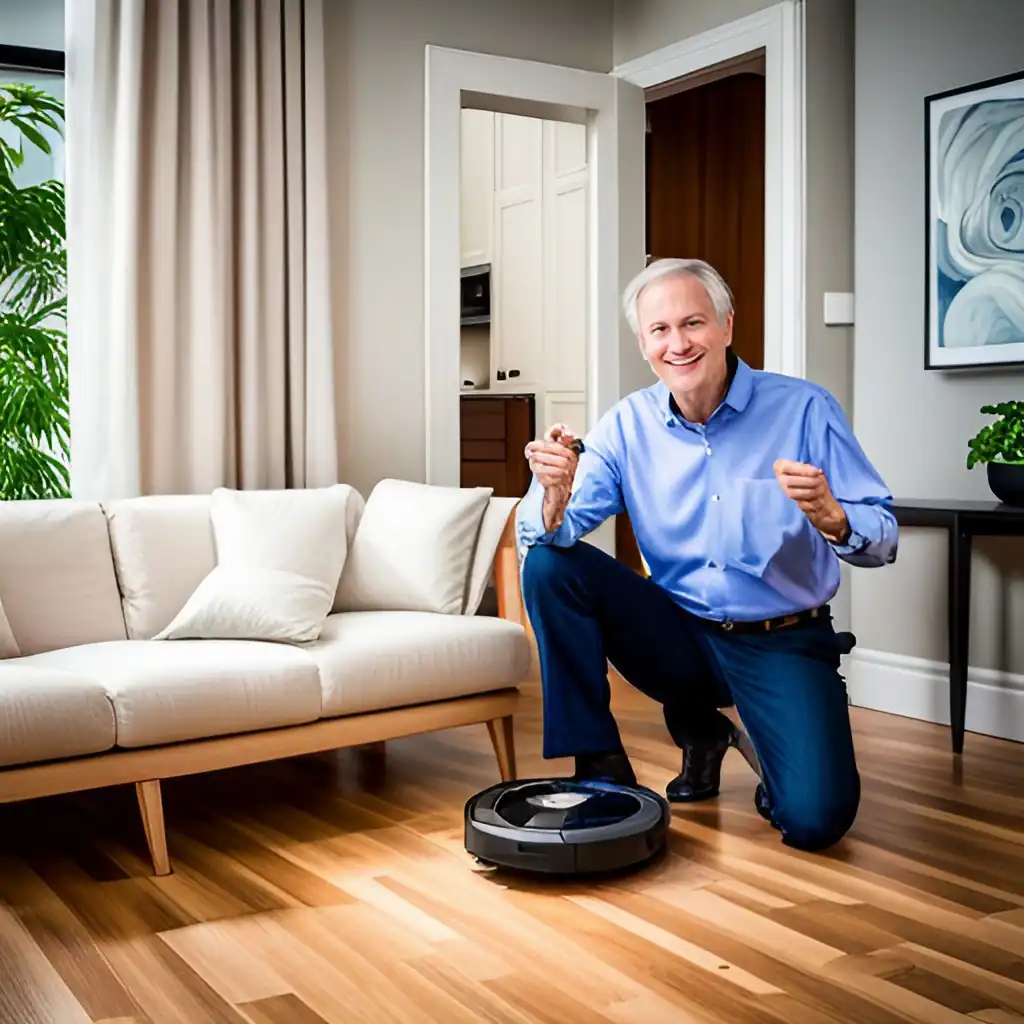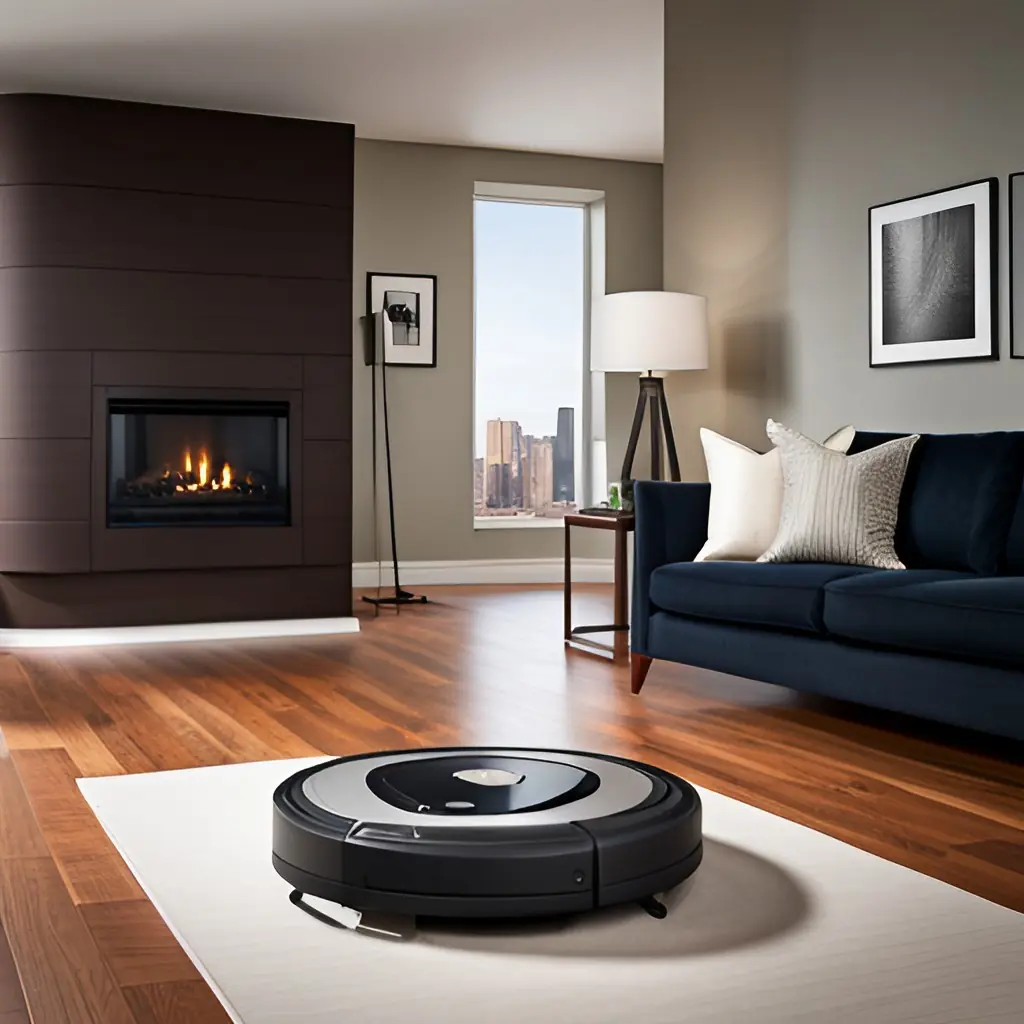A Roomba Robot Vacuum is an amazing addition to any home. It can do the job of cleaning your floors for you, without any fuss. However, like any other machine, Roomba Robot Vacuums can break down or develop issues that need troubleshooting.
In this guide, we’ll go through step-by-step instructions on how to troubleshoot common Roomba Robot Vacuum issues.
Roomba Troubleshooting Guide
Let’s start with the most common issue: a Roomba that refuses to start or stop cleaning.
Roomba Not Starting
If your Roomba Robot Vacuum is not starting, it could be due to several reasons. However, the most common issue is a depleted battery. Here is a more detailed guide to troubleshoot this problem:
- Check the Battery: The first step is to ensure that the battery is securely in place. Open the battery compartment on your Roomba and verify that the battery is properly seated.
- Charge the Roomba: Plug the Roomba into the charger. Make sure that the charger is connected to a power source and that the charging indicator light on the Roomba comes on. If it doesn’t, check the connection again. Allow the Roomba to charge for at least 3 hours.
- Start Cleaning Process: After charging, unplug the Roomba from the charger. Press the clean button to start the Roomba. If it starts, great! If not, proceed to the next step.
- Reset the Roomba: Sometimes, a simple reset can resolve the issue. To reset the Roomba, hold down the clean button for at least 10 seconds. Release the button when all the indicator lights on the Roomba start to flash. This signifies that the reset process has commenced. After this, try to start your Roomba again.
Troubleshooting can be a process of trial and error, but these steps should help you in addressing the most common reasons why a Roomba Robot Vacuum might not start. If the problem persists, it may be worthwhile to contact Roomba’s customer service for further assistance.

Roomba Gets Stuck
Roomba Robot Vacuums are engineered with advanced navigation systems to traverse around obstacles in your house, however, there may be instances where your Roomba gets stuck. This could occur under furniture, between objects, or on textured surfaces like rugs. Here’s a more comprehensive guide on how to tackle this problem:
- Identify the Obstacle: First, try to identify what’s causing your Roomba to get stuck. This could be a piece of furniture, a cluttered area, or a high-pile rug.
- Remove the Obstacle or Relocate the Roomba: If an obstacle is in the Roomba’s path, either remove it or relocate your Roomba to a clear area.
- Check the Side Brushes: Roomba’s side brushes could be entangled with dust or hair, leading to its inability to move. If that’s the case, remove the side brushes by unscrewing them.
- Clean the Side Brushes: Once the side brushes are removed, clean them thoroughly. Make sure there’s no hair or debris entangled in them.
- Reattach the Side Brushes: After cleaning, reattach the side brushes. Ensure they’re securely fitted.
- Reset the Roomba: As a final step, perform a reset of the Roomba. Hold down the clean button for at least 10 seconds until the indicator lights start to flash, signaling the reset process has been initiated.
- Restart the Roomba: Finally, press the clean button again to restart your Roomba.
If your Roomba continues to get stuck frequently, it might be due to a more complex issue. In such a case, it’s advisable to reach out to Roomba’s customer service for further support.
Also Read: Fixing Common Issues with Dyson Vacuum Cleaners
Pro Tips for Preventing and Handling Roomba Stuck Issues
For those who find their Roomba getting stuck on a regular basis, here are some expert tips that can help make your robot vacuum’s cleaning process smoother:
- Keep Your Home Clear of Clutter: Roombas are adept at navigating around small items, but substantial clutter can hinder their path. Regularly tidying up your home, especially the floor area, ensures your Roomba can move around without getting stuck.
- Optimize Your Roomba’s Passage: Pay attention to the areas where your Roomba tends to get stuck often. These could be low-clearance furniture, narrow spaces, or areas with many cables. Consider making adjustments to these areas or setting up virtual wall barriers in your Roomba’s settings to block off problematic zones.
- Regularly Clean the Roomba’s Brushes and Wheels: Hair, dust, and other debris can accumulate in the Roomba’s brushes and wheels, which can impede its movement. Regular cleaning of these components can prevent the Roomba from getting stuck.
- Consider Rug Heights: Roombas might struggle with thick, high-pile rugs. Consider replacing them with low-pile versions or create a ‘no-go’ zone for these areas using your Roomba’s settings.
- Update Your Roomba’s Firmware: Updates often include improvements in navigation algorithms to prevent the Roomba from getting stuck. Ensure your Roomba’s firmware is up-to-date to benefit from these enhancements.
Remember, consistent maintenance and a clutter-free environment can greatly enhance your Roomba’s efficiency and longevity. If you continue to face issues despite these tips, then it’s best to contact Roomba’s customer service for professional assistance.

Roomba Not Charging
Charging issues with your Roomba Robot Vacuum can be a result of several factors. To troubleshoot this, follow the steps below:
- Check the Docking Station: Start by ensuring that the docking station is properly plugged into an electrical outlet and the power light is on. This confirms that the docking station is receiving power.
- Position the Roomba Correctly: Next, make sure that your Roomba is properly seated on the docking station with the charging contacts aligned correctly. An improper placement can prevent the Roomba from charging.
- Examine the Charging Contacts: On both the Roomba and the docking station, there are charging contacts. Make sure these are clean and free from dirt or debris as any obstructions can interfere with the charging process. Gently clean the contacts using a dry cloth if you notice any dirt.
- Reset the Roomba: If the above steps do not resolve the issue, try resetting the Roomba. Hold down the clean button for at least 10 seconds until the lights on the Roomba flash, indicating a reset.
- Charge the Roomba: After the reset, place the Roomba back on the docking station and allow it to charge for a few hours before attempting to use it again.
If none of the above steps work, there might be an issue with the Roomba’s battery or the docking station. Remember, regular maintenance and careful handling of your Roomba can prevent many common issues, including charging problems.
Also Read: Samsung Robot Vacuum Troubleshooting + Advice
Roomba Battery Not Holding a Charge
If your Roomba Robot Vacuum’s battery appears to not sustain a charge as effectively as it once did, it might indicate that the battery requires replacement. Roomba-compatible batteries can be acquired from authorized retailers. However, ensure that the replacement battery aligns with your specific Roomba model. Here’s a guide to replacing the battery:
- Identify the Correct Replacement Battery: Different Roomba models require different battery types. It’s crucial to identify the correct battery for your specific Roomba model before making a purchase for replacement.
- Remove the Existing Battery: Access the battery compartment by removing the battery cover on your Roomba. Slide out the old, underperforming battery.
- Install the New Battery: Carefully insert the new battery into the battery compartment. Ensure it slots in fully and securely.
- Replace the Battery Cover: Securely fasten the battery cover back onto the Roomba to complete the battery replacement process.
Please note that the lifespan of a Roomba battery can greatly depend on how the Roomba is used and maintained. Here are some tips to enhance the lifespan of your Roomba’s battery:
- Regular Use: Regularly using your Roomba can actually help extend the battery life. If you’re not using it for a long period, it’s advisable to remove the battery and store it in a cool, dry place.
- Proper Charging: Avoid overcharging the battery by keeping it on the charging dock all the time. Once fully charged, disconnect the Roomba from the charger.
- Clean Your Roomba: Regular cleaning of your Roomba can prevent it from working harder than it needs to, which can drain the battery faster. Remember to clean the brushes, bin, and filter regularly.
- Keep Firmware Updated: Regular firmware updates often include software improvements that can optimize battery usage. Make sure your Roomba’s software is always up-to-date.
Roomba Brushes Not Spinning
When your Roomba’s brushes cease to spin, it’s often indicative of a clog. Follow these steps to troubleshoot:
- Check for Obstructions: Start by checking the brushes for any visible obstructions such as hair, fibers, or small objects that could hinder the mechanism.
- Remove and Clean the Brushes: If obstructions are found, remove the brushes by following your model’s manual. Once removed, clean the brushes thoroughly. Be sure to check the brush ends as well, as debris often accumulates there.
- Inspect the Brush Compartment: With the brushes removed, check the compartment for any debris that might be causing impediments. Clean it out thoroughly.
- Reinstall the Brushes: After cleaning, reinstall the brushes and run your Roomba to see if the problem persists.
- Consider Brush Replacement: If the brushes still don’t spin after cleaning, it might be the right time to replace them. Remember to purchase brushes compatible with your specific Roomba model.
By following these steps, you can ensure optimal performance of your Roomba Robot Vacuum’s brushes, furthering the longevity and effectiveness of your device.
How to Reset a Roomba
Sometimes your Roomba may not behave as expected due to various reasons – it could be because of software glitches, sensor issues, or after a long use without proper maintenance. In such cases, resetting your Roomba can often help to rectify the problem.
- Soft Reset: This is a basic reset where you keep the Roomba’s power button pressed for about 10 seconds and then release it. The device will make a sound, indicating that the reset was successful. This type of reset is useful when your Roomba is not starting or responding properly.
- Hard Reset: If a soft reset doesn’t work, you can try a hard reset. However, this should be your last resort as it erases all the data including the clock settings and scheduled cleaning times. To do a hard reset, remove the Roomba from the charging station, then press and hold the “dock,” “spot,” and “clean” buttons simultaneously until the device turns off. Once you release the buttons, place the Roomba back on the charging station. The Roomba will make a sound, indicating that the reset was successful.
Please note that the reset process may be slightly different depending on the model of your Roomba. Always refer to your owner’s manual or consult Roomba’s online customer support for specific instructions.
Roomba’s Error Messages
Roomba communicates with its users by displaying error messages via its built-in screen or through its app. Understanding these error messages is vital for effective troubleshooting. Some common error messages include:
- “Error 1: Move Roomba to a new location then press CLEAN to restart”: This message indicates that the Roomba is stuck or its wheel is hanging over a ledge. Moving the Roomba to a new location free of obstructions can solve this issue.
- “Error 5: Spin Roomba’s side wheels to clean”: This message indicates that one or both of the Roomba’s wheels are stuck. You will need to inspect and clean the wheels to solve this problem.
- “Error 9: Tap Roomba’s bumper to clean”: This message indicates that the Roomba’s bumper is not operating properly. It could be stuck or dirty, and cleaning the bumper can solve this issue.
These are just a few examples. There is a comprehensive list of error messages in Roomba’s user manual, and understanding these messages can help you quickly identify and rectify issues.
Remember that, while these tips can help you solve most common issues, it’s always best to consult with Roomba’s customer support for more complex problems to prevent accidental damage to your device.
Is the Roomba User-friendly for Homeowner Maintenance?
Roomba Robot Vacuums are designed with simplicity and user-friendliness in mind, allowing homeowners to handle most maintenance tasks with ease.
- The Roomba’s modular design allows for easy access to different parts of the device, such as brushes and the battery compartment, making regular maintenance like cleaning and part replacement straightforward.
However, while homeowners can comfortably handle tasks like cleaning brushes, replacing batteries, emptying bins, and updating firmware, more intricate problems might necessitate professional help.
- Roomba’s customer service and professional technicians can handle these more complex issues.
The degree of knowledge required by a homeowner is basic to intermediate understanding of the device’s functions and maintenance needs.
It’s always beneficial to read the user manual thoroughly and understand how the Roomba works. Additionally, any homeowner should be comfortable with handling small electrical devices, using a screwdriver, and following step-by-step instructions.
Nevertheless, iRobot, the manufacturer of Roomba, has numerous online resources and guides to assist you.
- Remember, if a problem seems too complex, it’s always better to reach out to customer service. Attempting to fix complicated issues could result in voiding the warranty or causing further damage to your Roomba.
Roomba’s Online Customer Support
Roomba’s online customer support, provided by its manufacturer, iRobot, is an excellent resource for resolving a wide array of Roomba-related issues. It provides access to extensive online resources including troubleshooting guides, video tutorials, and FAQs that offer solutions to common problems. Users can also find user manuals and detailed specifications for different Roomba models. Additionally, iRobot provides a forum platform for Roomba users to share tips, tricks, and solutions.
For more personalized assistance, users can contact the customer service team through email, live chat, or phone. The team of trained professionals is capable of addressing technical queries, assisting with maintenance issues, and providing guidance on part replacements.
Customer service is available at specific times throughout the week, and the current hours of operation can be found on the iRobot website. Remember to have your Roomba model number and specific details about your issue ready to facilitate the troubleshooting process.
Using Roomba’s online customer support can help extend the life of your Roomba, enabling it to perform at its best for a longer period of time. It’s recommended to take advantage of these resources for any maintenance or operational questions you may have about your Roomba Robot Vacuum.
Conclusion:
In conclusion, troubleshooting your Roomba Robot Vacuum isn’t as tough as it might seem. By following these simple step-by-step instructions, you can easily troubleshoot and fix common Roomba issues.
Remember to keep your Roomba clean and well-maintained to ensure it functions properly for a long time. With these troubleshooting tips, you can get back to enjoying a clean home without any hassle.

I’m J.S., I created and am the content manager at DIYHouseSkills.com. I do the research and write the articles that appear on this website. I’ve learned many household skills during my life and think it’s important to at least know the basics so that you can save yourself time and money… READ FULL BIO >
- DIY Secrets: Finding and Using the Bosch Ice Maker Reset Button
- Chest Freezer vs. Upright Freezer: Which Should You Buy?
- Say Goodbye to Stubborn Stains on Stainless Steel Pots
- Transform Your Morning Brew: Expert Tips for Better Coffee
- Effortlessly Remove Mold From Tile Grout with These Easy Steps
- Proven Strategies to Unclog Your Kitchen Sink Efficiently
- Outlet Not Working, Breaker Not Tripped | Advice
- How to Repair a Sage Coffee Machine

